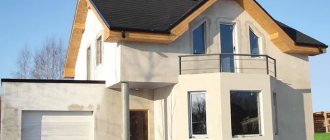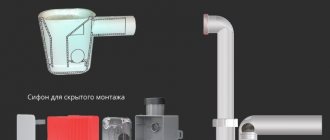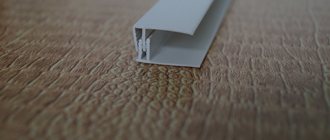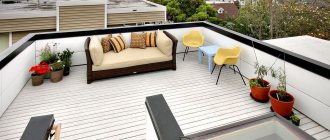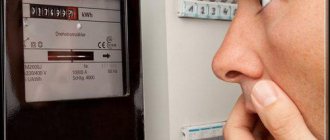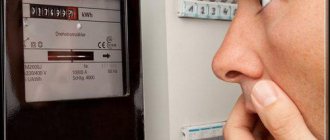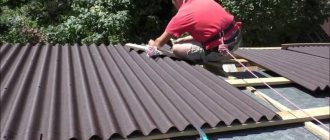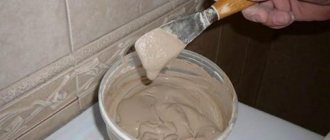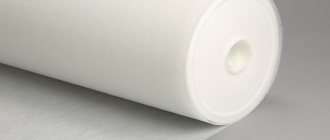Removable or permanent formwork for monolithic construction of foundations is used almost everywhere. Such equipment for monolithic construction is used when it is necessary to create concrete or reinforced concrete structures, lintels, floor slabs, pool bowls and other things. It is necessary to build formwork equipment in order to give future brick and concrete structures the desired shape and texture.
Technoblock formwork
Previously, formwork construction technology was exclusively removable. That is, after the monolithic concrete hardened, it was dismantled, leaving bare concrete. Nowadays, permanent formwork for foundations is becoming increasingly popular. In particular, do-it-yourself permanent formwork from the company Tehnoblok, a well-known manufacturer of building materials.
Features of basalt insulation
Basalt insulation is a material made from fibers obtained at high temperatures from igneous hard rocks under special technological conditions. When solid rock melted on special equipment flows through holes of a certain diameter, threads are formed, which are then used to make insulating mats and rolls.
Basalt fiber has sizes from several units to hundreds of microns. It largely determines the rigidity of finished products, as well as their thermal insulation properties.
It can be successfully used:
TOP 3 best products according to customers
Basalt wool Rockwool Acoustic Butts 1000x600x100 mm - heat-insulating, sound-absorbing.
Conventional formwork: complexity of execution and numerous technological operations
Carrying out monolithic concrete work using conventional formwork involves the following stages of work:
- Manufacturing of panels from boards or sheet materials fixed to a frame.
- Installation of formwork with leveling into a single structure.
- Strengthening the walls from the outside with special supports to prevent the walls from expanding when pouring concrete.
- Pulling parallel panels together to accurately adjust the thickness of a wall or foundation.
- Coating the internal surfaces of walls to prevent concrete from sticking to them with oil compounds or upholstery with film materials for the same purpose.
- After the concrete has set: dismantling the structure, cleaning from adhesion, minor repairs, re-installation until the required height is reached.
- Refinement of walls with cleaning of irregularities, covering up chips, cracks and potholes that occur at joints and during dismantling of formwork panels.
- Carrying out plastering and painting work.
- Installation of additional insulation, noise absorption, vapor barrier, water absorption, decoration, cladding of a concrete monolithic surface.
Criteria for choosing insulation for a home
You can choose the best basalt thermal insulation material for insulating specific structures according to the following criteria:
When choosing, you should take into account the following fact: the lower the density of the material, the better basalt wool is able to insulate structures.
Selecting material density
In order for basalt slabs to meet the required technical characteristics, it is first necessary to pay attention to their density, on which the weight of the structure and thermal insulation properties depend. Experienced experts give the following recommendations for selection:
Scheme of TECHNOBLOCK Fixed Formwork
Price of permanent TECHNOBLOCK formwork with cladding and insulation = 3,000 rubles. for 1 sq.m. To assemble and build from TECHNOBLOCK, you need a simple construction tool: a level, a screwdriver, a concrete mixer and the desire to build yourself. No heavy equipment required.
Features of thermal insulation of the TechnoNIKOL company
The products of TechnoNIKOL have been on everyone’s lips for a long time. Now, insulation made from basalt fiber and polystyrene has now been added to the range of vapor and waterproofing materials.
A review of TechnoNIKOL insulation products shows that there are no particularly advanced technologies here. The division into separate series of basalt products occurs depending on the density of the fiber weaving. And certain technical characteristics are regulated simply by adding a certain amount of impregnation.
It is the latter that have led to increased interest in TechnoNIKOL mineral slabs. Thanks to them, stone wool has become less susceptible to moisture. Some buyers note in their reviews that basalt fibers absorb water with difficulty, but they remove it back quite well. This is a real breakthrough for mineral wool. A simple solution to the problem of rodents and insects that like to bask in the insulation layer was also found. At TechnoNIKOL production, it is treated with compounds that repel uninvited “neighbors”.
The company's product range includes basalt products of all popular forms:
Mineral wool products
One of the manufacturer’s most popular and affordable products, which has a relatively low density of 30-40 kg/m3, but at the same time a standard thermal conductivity indicator (0.039 W/m∙°C). Plates made of glued basalt fibers are available in two thicknesses: 50 or 100 mm. But unlike other brands, TechnoNIKOL offers insulation not only 60 cm wide, but also 50 cm wide.
Rocklight is positioned as a universal material for most types of work. But if you carefully study the technical characteristics and reviews of this insulation, there can be no talk of any multi-purpose use here. Rocklight is still suitable for joists or as roof insulation if you choose the right thickness and eliminate possible loads. But it’s still not worth using it in wall structures.
These slabs are denser (38-45 kg/m3) and withstand compressive loads better than Rocklight insulation. At the same time, acoustic insulation reduces the level of external noise by 60 dB, which is considered a very good indicator. Such technical characteristics of the mat are ensured by the special chaotic weaving of basalt fibers. Technoacoustic slabs have found application in the construction of interfloor ceilings and internal partitions. Their thickness from 40 to 200 mm allows you to purchase insulation with the required properties for any job.
These slabs are designed for frame systems and can only work without external loads. They have two types of different densities:
Medium-density basalt mats (25-35 kg/m3) have similar properties and scope of application to “acoustic”, but due to their lower weight they are easier to install.
It is used as thermal insulation under facade cladding, that is, on vertical surfaces. Although, at a density of 40-70 kg/m3, mineral wool insulation does not retain its linear dimensions for long. However, bonding the fibers with phenolic resins made it possible to reduce the shrinkage of the Technoblock. The manufacturer also took care of better resistance of thermal insulation to moisture, although the use of a water barrier does not cancel this.
Technoblock basalt slabs are available in the following modifications:
Please note: all insulation materials of the “light” series, including the much-advertised Rocklight, are effective only in horizontal and flat structures. On vertical surfaces, there is a high risk of mineral wool shrinking and sliding if care is not taken to secure it tightly enough.
Opens a list of products with a higher specific gravity. It has a density in the range of 72-88 kg/m3 and compressive strength in different versions from 10 to 15 kPa. This is a sufficient indicator for installation under ventilated facades, for example, made of siding.
Here we can already talk about acceptable rigidity, allowing the use of thermal insulation under a small compressive load. Available in several versions:
TechnoNIKOL in the description for this group of products allows the use of basalt wool for the installation of Warm Floor systems, installation under a screed and direct laying on prepared soil.
Application area
Technoblock basalt wool is used in the construction of buildings as a thermal insulation and acoustic barrier.
Slabs that retain their shape and are resistant to moisture and frost are used in layered masonry. They are the middle layer between the outer and inner walls, made of brick or concrete blocks. During the installation process, an air gap is left to prevent the formation of condensation on the insulation. One of the areas of application of Technoblock is hanging facade systems. The technology consists of constructing a cladding with a gap for ventilation. Mineral wool fits tightly into the prepared frame, preventing the appearance of gaps. To fix it to the wall, disc-shaped dowels are used. Holes are drilled for fasteners using a hammer drill. The flat plastic head of the dowel should be flush with the surface of the slab. The layer thickness depends on the thermal design calculation. When laying two layers, the effectiveness of thermal insulation increases.
Ventilated facades can be installed for houses made of any building material. One of the important requirements for their installation is to ensure fire safety. In the event of a fire, the fire quickly spreads throughout the structure. The use of Technoblock Standard insulation eliminates the occurrence of such a situation. Basalt material does not burn and can withstand temperatures up to 600°.
PPS slabs
XPS Carbon Eco extruded polystyrene foam is primarily used for thermal insulation of foundations. Polymer boards are available in several versions:
1. Fas - used for cladding plinths and foundations for subsequent plastering. It has a rough surface that increases adhesion to solutions.
2. SP - used for thermal insulation of “Swedish slab” type foundations, therefore the products are given special rigidity, allowing them to withstand bending loads of up to 0.3 MPa.
3. Drain - can be used for roof insulation or when building a foundation in water-logged soils, where effective moisture removal is required. Therefore, drainage grooves are cut into the slabs.
4. The professional series of polystyrene insulation from TechnoNIKOL Carbon Prof are very interesting. They implement a technology that combines low density and increased strength in one material:
W/m∙°С
Such properties determine the main scope of application of thermal insulation when carrying out work in the basement of buildings. It can also be installed in roofing structures. But do not forget that such coatings will require the organization of good ventilation in residential premises, and the flammability group G3-G4 is not conducive to the free use of polystyrene on roofs.
“I have a cold garage - one brick walls are clearly not enough.
Of course, there is a potbelly stove, but in winter the effect is felt only if you are near it. I don’t see the point in laying anything serious, so I just lined everything from the inside with TechnoNIKOL basalt insulation. It turned out quickly and inexpensively. The normal temperature remains inside for another two days after the stove goes out.” “I used TechnoNIKOL Rocklight mineral wool products for the first and last time. The top and bottom sheets of the packaging could be thrown away immediately: they are thin and simply fall apart in your hands. Those slabs in the middle correspond to the dimensions declared by the manufacturer, but are completely uneven in density - somewhere thick, and somewhere empty. So I’m very disappointed in the quality.” “The neighbor suggested installing TechnoNIKOL for the facade under the plaster. It’s good that the salesman in the store was smart - he suggested that alkaline solutions should not be applied to the insulation. So we had to abandon the cement finish in favor of a more expensive polymer finish - we couldn’t save money. But the result is really good. I heat the dacha irregularly, but there is no dampness or mold on the walls. In my opinion, this is already a plus. The façade also looks fine, as long as it hasn’t sagged or cracked anywhere.” Igor Vladimirovich, Nizhny Novgorod.
“At work I often come across TechnoNIKOL products. And to those who leave bad reviews, I can say one thing: what you paid for is what you got. These insulation materials have such a peculiarity - all slabs and mats of low cost are, to put it mildly, of low quality. But it’s worth turning to normal and expensive models, and - oh, miracle! – it turns out that TechnoNIKOL does not shrink, does not fall apart into fibers and retains heat perfectly. In general, don’t try to save on your own comfort.”
Summary: Pros and Cons
A review of basalt and polystyrene insulation materials produced by TechnoNIKOL shows that in terms of thermal insulation properties, the difference between them is small. But other technical characteristics should be taken into account when selecting materials for work in different parts of the building:
Design, types and their differences
The developers of permanent formwork Technoblock, Durisol, and Arbolita were able to come up with and implement a rather interesting concept for a prefabricated structure. Velox permanent formwork, like the others, consists of two sheets that form the edges of the supporting structure.
Inner sheet is usually cheaper and simpler. It is made of ordinary concrete, but of a cast system. That is, the profiled sheet is immediately ready for applying putty or a finishing layer of plaster . And this is a big plus, because you will be able to save on thoroughly leveling the walls, especially above the attic.
The outer profiled sheet, especially if we mean a facing model, consists of foam plastic slabs, which are then covered with a concrete slab made of “cast marble”. The peculiarity of the outer slab is its texture and the ability to select a specific texture of the profiled sheet.
Since the Arbolite formwork is already insulated, all you have to do is apply a layer of thin putty to the concrete, prime it, and then paint it.
Agree, if you compare the financial and time costs with conventional facade work, the advantage will clearly not be in their favor.
Moreover, this entire system is assembled in an elementary way. All slabs have pre-drilled holes for fasteners. If your model does not have holes drilled, then you will have to do it yourself.
Main types of formwork Technoblock
The fasteners themselves are also available. These are special screw L-shaped hooks.
Plastic spacers are attached to the hooks. The spacers are made using such technology that even their dimensions can be changed, and quite simply. With the help of plastic spacers you can change the final thickness of the future structure.
Using the same formwork you can create both a wall with a thickness of 50 mm and a load-bearing structure with a thickness of 250 mm.
Having understood the design of permanent formwork Technoblock, let’s turn to its popular varieties. Here are a few of them:
- Technoblock standard.
- Technoblock combi.
- Technoblock without insulation.
- The technoblock is removable.
Standard models are permanent structures insulated on both sides, which are used most often. They are used when it is necessary to create walls of plinths, foundations, powerful external load-bearing structures, etc.
The technoblock combi has insulation on only one side. Variations of finishes can be combined. For example, leave the finishing and insulation only on the outside, and install a regular enclosing concrete slab from the inside.
Models without insulation differ from standard ones only in its absence. They are often used for pouring columns, pool bowls, internal load-bearing walls or partitions.
Construction of walls from facing permanent formwork Technoblock
Well, removable systems consist of two durable plywood sheets. The corrugated sheets are mounted and fixed using a similar technology; only after the concrete has hardened, the plywood is removed . The spacers and screws are left inside the concrete structure, since they are consumable elements.
The convenience of Technoblock removable formwork lies in its practicality and readiness for work. You can assemble such a structure in a matter of minutes, while with homemade models you will have to seriously tinker. However, we note that such a system cannot be rented.
Reviews about Technoblock formwork
Now we recommend that you pay attention to reviews about permanent formwork of the Technoblock type. Reviews from customers always help to better understand the situation. After all, nothing gives such a clear picture as reviews from a person who has already used this product.
Valentin, 29 years old, Kharkov:
At work we were building a house using Technoblock formwork. We used standard models with external insulation. I can say that I have never seen anything more convenient in my life.
My colleagues and I calculated that by using this system we saved money on rent and about a week of time. And this is according to the most conservative estimates. If you are willing to pay more for such material, then take it without hesitation.
Anton, 42 years old, Penza:
I used Technoblock formwork to fill the outer walls of a large cottage. After work I had only pleasant impressions. However, I will note in advance that the internal slabs will have to be trimmed, and this is not so easy. Otherwise, the material and technology are thought out to the smallest detail. It is very convenient to work.
Kirill, 39 years old, Kamenka:
I was very pleased with this formwork. I have never seen anything more convenient in my life. Not only can you adjust the thickness of the walls and select insulation, but you can also change the facing panels the way you want.
Technoblock wins by a huge margin over all other models of factory formwork.
Formwork assembly process from the Technoblock company (video)
Features of using insulation from Technonikol
Mineral wool insulation under the TechnoNIKOL brand with adhesive for penoplex has been occupying a leading position in the domestic building materials market for many years.
The key characteristic of TechnoNIKOL mineral wool, which distinguishes it from other competitors, is maximum resistance to deformation under the influence of external influences, which is achieved by adding special binding impurities to the composition of the mineral wool.
TechnoNIKOL Rocklight basalt wool
Resistance to deformation, which is a prerequisite for long-term effective operation of the thermal insulation layer, coupled with the lowest thermal conductivity coefficient that mineral wool has, makes TechnoNIKOL one of the best insulation materials existing today.
Alternative materials
As an alternative to basalt wool, polystyrene foam is often used. It allows the construction of structures at high speed, but has a number of disadvantages. First of all, polystyrene foam absorbs moisture in large quantities. This leads to a deterioration of the microclimate inside the building.
The material is also subject to combustion. Although the manufacturer claims that polystyrene foam is made only from non-flammable types of foam, it is better not to take risks and use finishing only where the risk of fire is minimal.
The real competition for Technoblock comes from materials produced under the brands Rockwool, Ecobasalt, PAROC and ISOROC. This is also mineral wool, but made by other manufacturers. Imported brands of such cladding have a number of advantages over Technoblock; domestic brands are significantly inferior to it in some respects.
